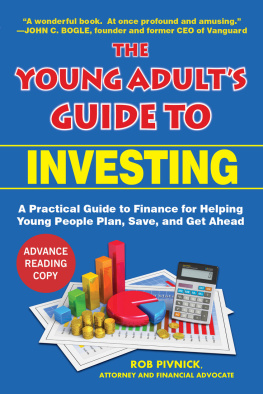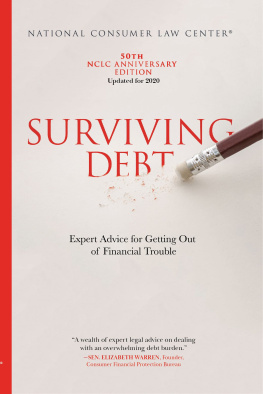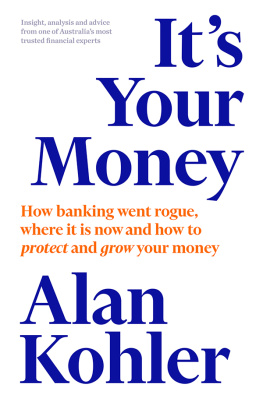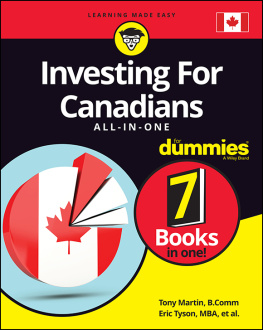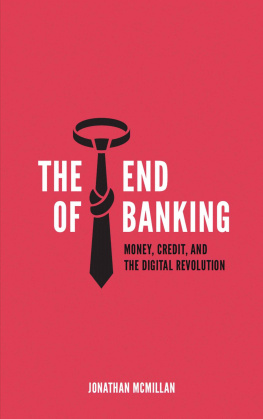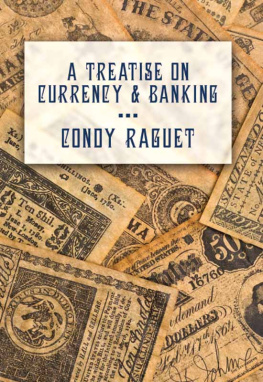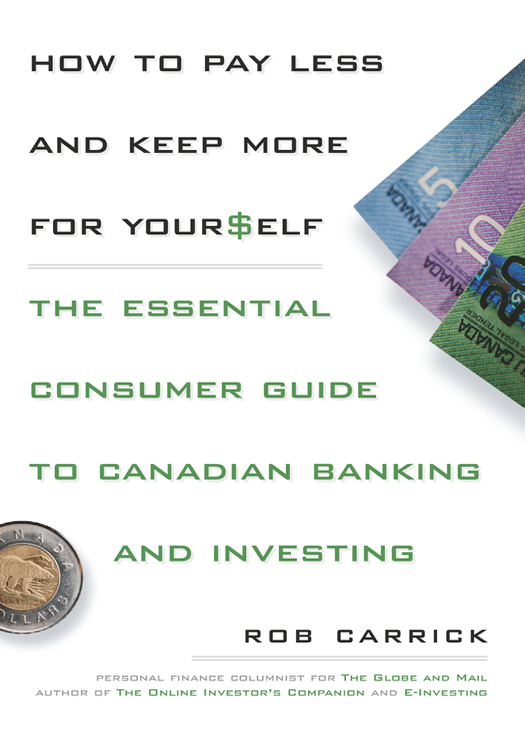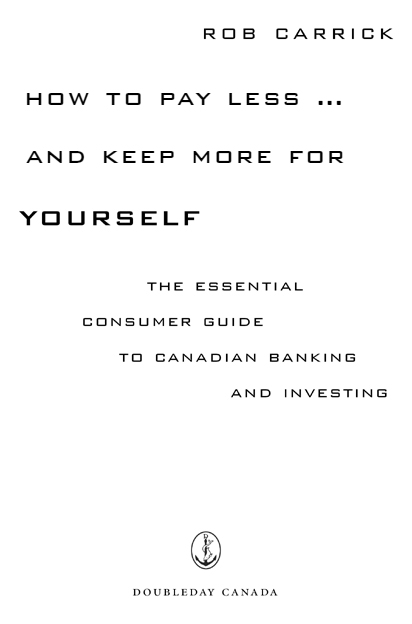Copyright 2006 Rob Carrick
All rights reserved. The use of any part of this publication, reproduced, transmitted in any form or by any means electronic, mechanical, photocopying, recording or otherwise, or stored in a retrieval system without the prior written consent of the publisheror, in the case of photocopying or other reprographic copying, a license from the Canadian Copyright Licensing Agencyis an infringement of the copyright law.
Doubleday Canada and colophon are trademarks.
L IBRARY AND A RCHIVES C ANADA C ATALOGUING IN P UBLICATION
Carrick, Rob, 1962
How to pay less and keep more for yourself : the essential consumer guide to Canadian banking and investing / Rob Carrick.
eISBN: 978-0-307-37487-5
1. Finance, PersonalCanada. 2. Banks and bankingCanada. 3. InvestmentsCanada. 4. Consumer educationCanada. I. Title.
HG179.C29 2006 332.02400971 C2006-904757-X
Published in Canada by
Doubleday Canada, a division of
Random House of Canada Limited
Visit Random House of Canada Limiteds website: www.randomhouse.ca
v3.1
To Theresa, Will, and Jamie
Your love and support are what its all about.
CONTENTS
High-interest savings accounts
Chequing accounts
Credit card reward programs
Unsecured lines of credit
Home-equity lines of credit
Your credit rating
Renewing your mortgage
Alternative lenders
Negotiating tactics
Mortgage brokers
Variable-rate vs. fixed-term mortgages
The costs of buying funds
Ownership fees, and how they eat up your returns
Indexing
Exchange-traded funds
Three ways to pay your adviser
Products of dubious value such as wrap accounts and principal-protected notes
Discount brokers versus full-service brokers
How to find the best discount broker
Value-packed ways to invest using a discount broker
INTRODUCTION
B ANKS, MUTUAL FUND COMPANIES, AND INVESTMENT dealers are among the most successful corporations in Canada, and they have you to thank for it. Yes, its your hard-earned money that made these companies what they are today. Add up all the fees you pay to your bank, fund companies, and financial adviser and then combine them with the money paid by other clients. The resulting flow of multi-billions in annual revenue makes companies in the financial sector among the richest in Canada.
This calls to mind an often-told story about a self-important investment adviser who was visiting a marina with a friend and showing off the fancy boats that he and some of his fellow advisers owned. Nice, said the friend, but where are all the clients boats? Lets be fairsome people do get rich with the help of the financial services industry, and just maybe they get to float their boats with the big guys. As for the rest of uswell, lets just say theres a monetary imbalance between what the Bay Street brigade is pulling in and whats left over for us. Youll see it in those bank accounts that pay zero interest while raining down fees, in mutual funds that never seem to make as much money for you as they do for the companies that run them, and in the services of investment advisers who worry less about your financial progress than their own. The whole idea behind the financial services industry is to make money by helping you make and manage your money. Its a totally valid model, but not always a fair one in real life.
This book is your road map out of the dysfunctional relationship that too many Canadians have with the financial industry. You need banks, fund companies, and advisers as much as they need you, so Im not advising you to stuff money in your mattress or adopt any similarly crazy strategy. Rather, the point is to give you the information you need to bring equality to your relationships with providers of financial services. In other words, give you the tools to get the most from banks and other financial services companies while paying the least.
Years ago, the idea of questioning the cost and quality of the products you bought from a bank, broker, or fund company would have seemed absurd to the vast majority of people. I remember going to the bank for my first mortgage in 1993, and waiting to be told what interest rate the bank would deign to offer. I also recall a meeting with a broker a couple of years later at which I was told exactly what I would be investing in and exactly how much it was going to cost. In both cases, I didnt know enough to question what I was told. Even if I had known, it would have been explained to meoh so politelythat if I didnt like the deal, I could shove off.
Today, you dont get quite the same treatment. The Internet provides a lot of information on rates and fees, so most financial service providers cant treat you like a complete ignoramus (a partial ignoramus, yes). Also, competition is so intense between banks, fund companies, and advisory firms that everyone now recognizes the need to provide a certain degree of forthrightness and respect. Still, we have not yet arrived at a level playing field, to use a clich favoured by those on Bay Street. While there are all kinds of great deals out there in banking products, mortgages, funds, and so on, you often have to know about them to take advantage. Example: Whereas it used to be a triumph to get a full percentage point knocked off your mortgage, today its often possible to get an even bigger discount. Dont expect your banker to volunteer this information, though. Instead, you have to ask.
This book tells you how to ask for better terms. And if you ask and still dont get what you want, it tells you where to go for a better deal. Here we arrive at one of the current key trends in financial services. While all of the big companies want to have a relationship with youin other words, sell you lots and lots of stuffthe truly savvy individual has many relationships with many companies. Im a good example. I have my chequing accounts with one bank, my savings account with another, my mortgage with yet another, and my main credit card with still another. Yes, it might simplify life to aggregate all of these products with one institution, but the net result would be to make that single institution richer at my own expense. Thats the opposite of what this books all about.
So, who am I to tell you how to deal with the financial industry? Lets just say this book has been more than eight years in the making, during which time I have written a regular column on personal finance for The Globe and Mail, Canadas national newspaper. Ive spoken to hundreds of executives at banks, fund companies, brokerages, and financial advisory firms over the years, so I know how their world turns. At the same time, I have received (and, almost always, answered) tens of thousands of emails from readers asking questions and relating their experiences. Im the guy in the middle, and I know both sides of the story.
HOW MUCH CAN I SAVE, AND HOW MUCH MORE CAN I MAKE?
A lot. Want specifics? Lets say you pull the money youre saving for a vacation out of a regular savings account and move it to a high-interest savings account offering, say, 3 percent. The difference between this and the microscopic or non-existent interest paid by your bank could easily be worth $100. A better deal on your mortgage and line of credit should save you a few hundred dollars a year in interest, and lower-cost mutual funds could pad your gains by even more. Lets do a quick rundown to give you the big picture.


